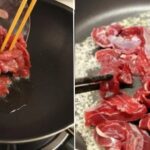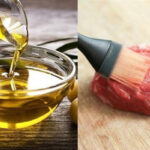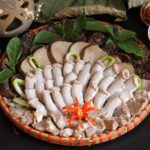Pork knuckles are a collagen-rich food, providing essential protein for healthy skin. Collagen improves skin elasticity, making it supple and smooth. Due to these nutritional benefits, pork knuckles are often used to create delicious and nourishing dishes that offer both flavor and skin health advantages.
**Tip: Braising Pork Knuckles Without Water**
Braised pork knuckles are a favorite among many diners because of their sweet aroma and tenderness. A special technique to save time and energy while maintaining the dish’s superb quality is to braise without using water. This method not only infuses the knuckles with natural flavors but also results in a delectably greasy dish.
**Ingredient Preparation**
– Pork Knuckles: Select pieces with thin skin, a fresh pink color, and no foul odor. The front trotters usually have more tender meat and are ideal for braising.
– Spices: Prepare ginger, dried onions, garlic, pepper, chili, salt, fish sauce, sugar, and seasoning powder to enhance the dish’s flavor.
– Vegetables: To make the dish more appealing and nutritious, consider adding carrots, onions, or potatoes.
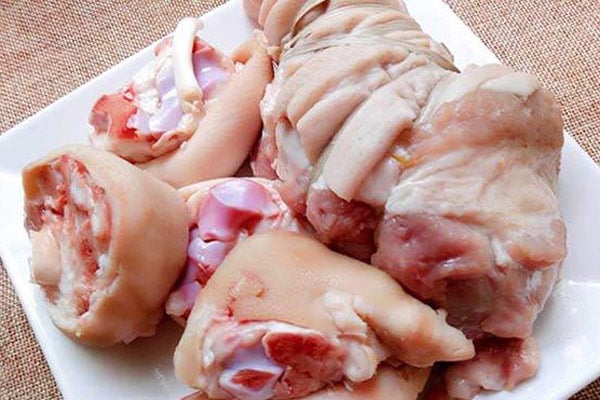
Braised Pork Knuckles: A Dish That’s Both Tender and Flavorful
**Pork Knuckles Preparation**
Proper preprocessing is essential for a delicious and clean-tasting braised pork knuckle dish. Wash the knuckles thoroughly, scrape off excess hair and fat, and cut them into bite-sized pieces. Rinse multiple times to ensure cleanliness. To eliminate any unpleasant odors, blanch the knuckles in boiling water with added salt and crushed ginger for 2-3 minutes, then rinse again.
Once cleaned, marinate the knuckles with spices such as salt, pepper, minced garlic, ginger, fish sauce, and a little sugar. Allow the knuckles to marinate for at least 30 minutes to ensure the flavors permeate the meat, resulting in a more flavorful dish.
When you’re ready to begin braising, place the marinated knuckles in a pot and simmer over low heat. The low temperature not only ensures gradual cooking but also maintains the tenderness of the meat, preventing it from drying out. Additionally, the low heat helps melt the fat from the knuckles, creating a natural layer of grease that adds to the dish’s indulgent texture without the need for added water.
If you wish to enhance the dish further, consider adding vegetables such as carrots, onions, or potatoes to the pot along with the knuckles. These vegetables will release moisture, blending with the fat to form a smooth, sweet, and enticing mixture.
During the braising process, regularly check the knuckles to ensure even cooking and prevent burning. If needed, you can add a small amount of coconut water to impart a delightful, subtle sweetness to the dish.
Once braised, the knuckles will take on an appealing brown color and will be tender, juicy, and infused with spices. The combination of spice aromas and the knuckles’ natural fat makes for an irresistible dish. This braised pork knuckle creation can be served with white rice, noodles, or as an ideal beer snack.
When serving, provide a dipping sauce made from fish sauce mixed with lime, garlic, and chili, or a salt and pepper lime dip to enhance the flavor. The dish is not only tasty but also highly nutritious, especially rich in collagen, which is excellent for skin and joint health.
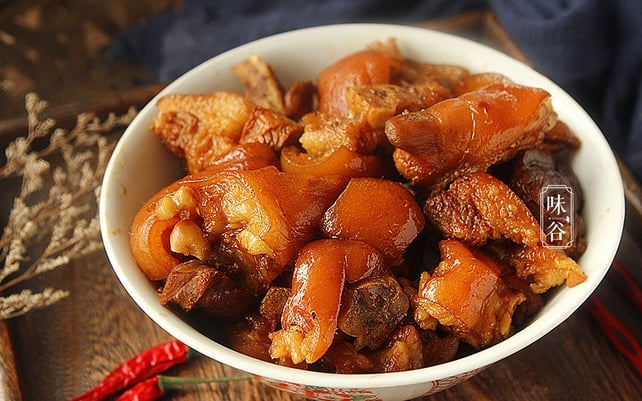
Nutritious and Delicious: Collagen-Rich Pork Knuckles for Skin and Joint Health
**Some Notes on Braising Pork Knuckles Without Water**
When braising pork knuckles without water, the choice of pot is crucial. Opt for pots with thick bottoms and excellent heat retention, such as clay pots, cast iron pots, or pressure cookers. These types of pots distribute heat evenly and retain warmth for extended periods, ensuring the knuckles cook thoroughly without drying out or losing moisture.
During the braising process, refrain from frequently lifting the pot lid. Doing so not only causes heat loss but also prolongs the cooking time, affecting the tenderness and flavor of the knuckles. Keeping the lid closed helps retain the flavors within the pot.
The braising time for waterless pork knuckles will depend on the size of the knuckle pieces and the type of pot used. Typically, the ideal time for tender knuckles is around 1.5 to 2 hours. If you choose to use a pressure cooker, this time can be significantly reduced to about 45 minutes, offering a quick and efficient method while maintaining the dish’s quality.
Is The Face Shop Gold Collagen Mascara Any Good?
The Face Shop Gold Collagen Mascara is a highly-coveted cosmetic product among women. With its allure, this mascara has captivated a wide range of customers, but what makes it so appealing? Is The Face Shop Gold Collagen Mascara truly a cut above the rest? Let’s delve into the answer and explore the unique qualities of this beloved cosmetic item.

























